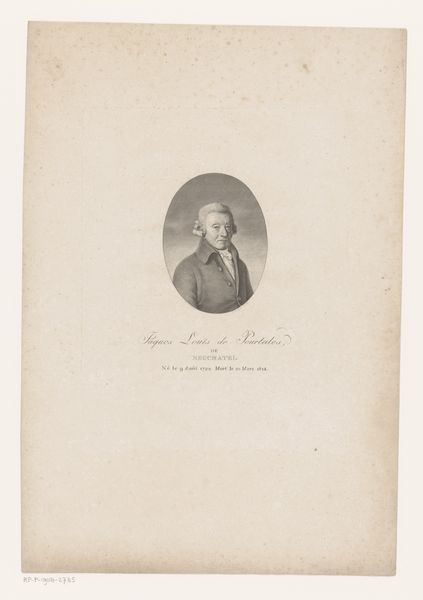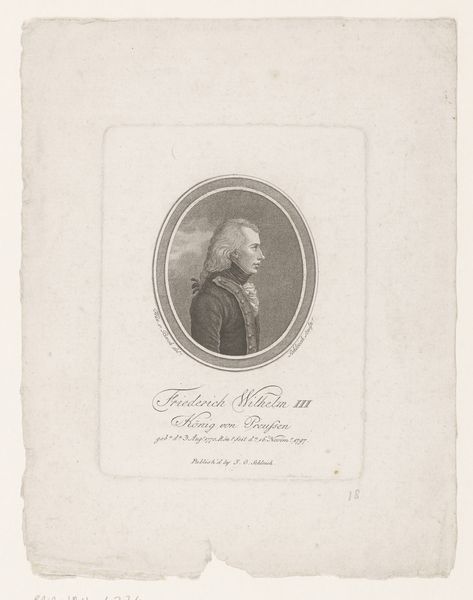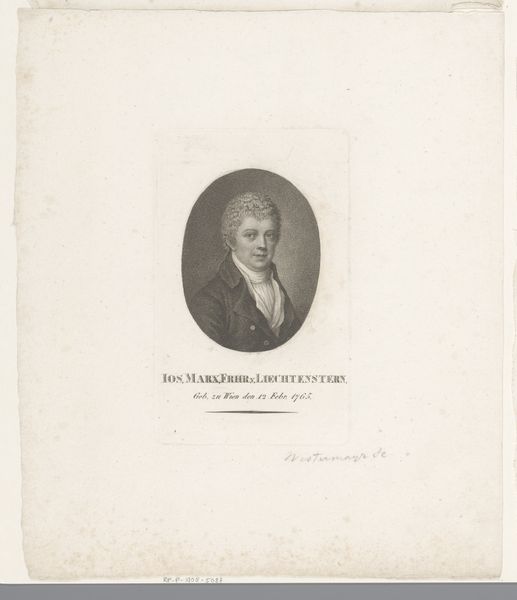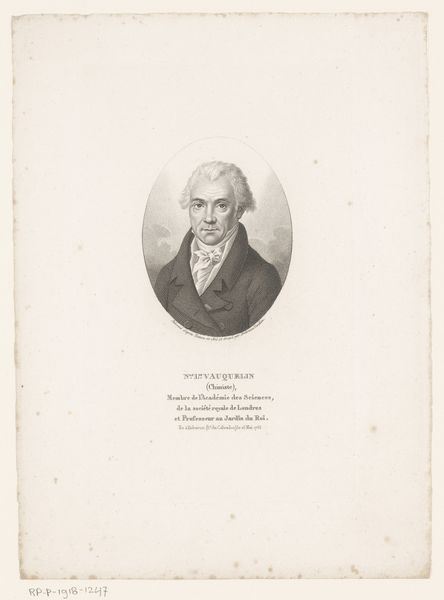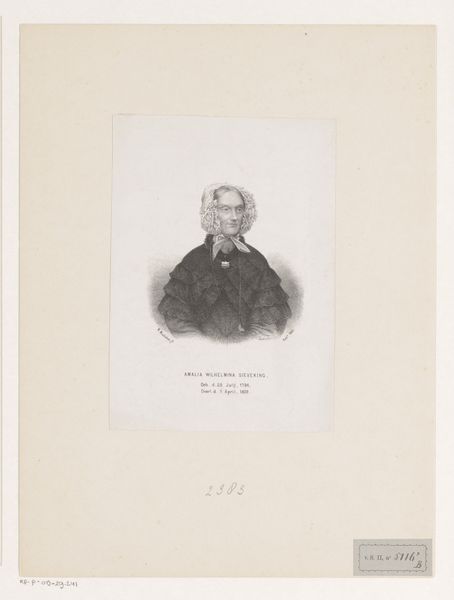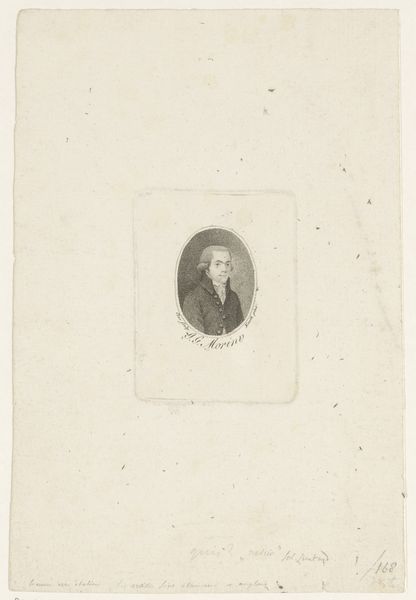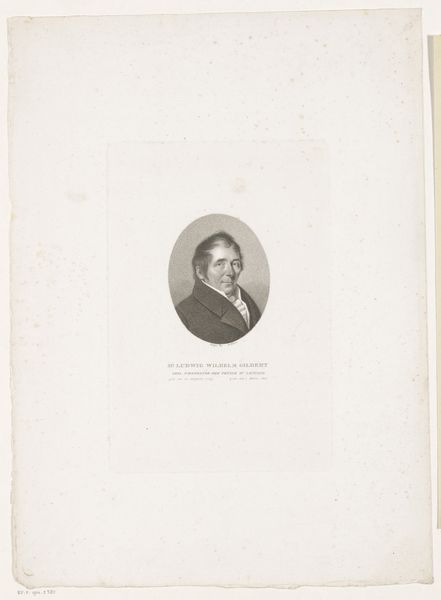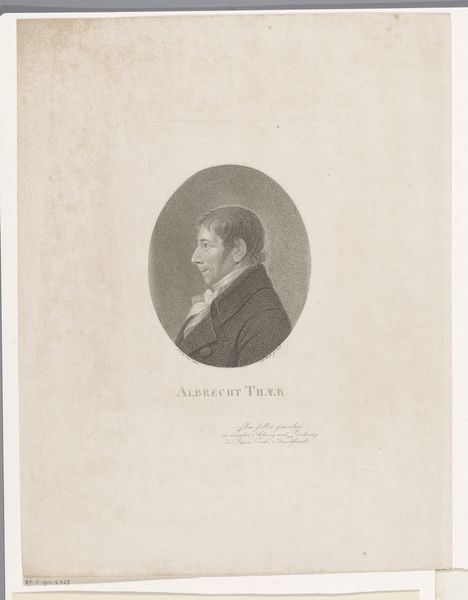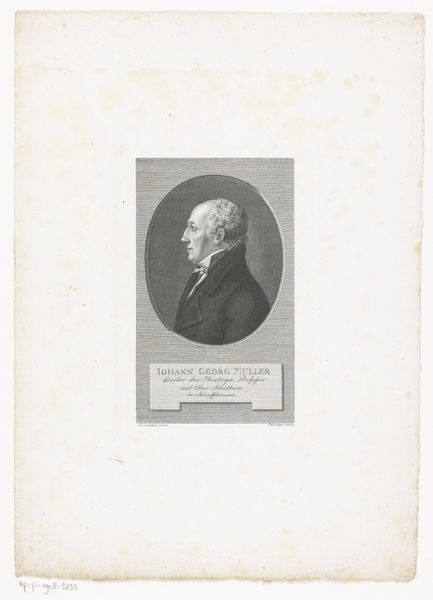
print, engraving
#
portrait
#
neoclacissism
# print
#
old engraving style
#
academic-art
#
engraving
Dimensions: height 227 mm, width 136 mm
Copyright: Rijks Museum: Open Domain
Editor: This is a print of "Portret van Johann De Caro" by Johann Carl Richter, made sometime between 1780 and 1832. It's an engraving, very classical looking. The oval framing feels so formal. What stands out to you? Curator: The oval itself is potent; think of the 'imago clipeata' - the image of an ancestor on a shield - linking to notions of lineage, reputation, and cultural memory. What does it signify to frame Johann De Caro, not simply as an individual, but within that tradition? Editor: It's like placing him within a lineage of important figures. And, the text underneath further emphasizes his profession... a Doctor! Curator: Precisely! Notice how the portrait itself uses the visual language of Neoclassicism. What kind of person do we imagine, looking at those sharp lines and controlled expression? How does this style attempt to communicate something specific about De Caro's character? Editor: Maybe trustworthy, rational… someone you’d trust with your health? Almost like an advertisement of virtue. Curator: Consider how that rationality played out within the Enlightenment context. Doctors held a specific cultural role, bridging scientific advancements and the wellbeing of society. The engraving becomes a cultural artifact reflecting those values, what are we willing to accept and internalise? Editor: So it's not just a portrait, but an emblem of his profession and the era’s ideals! That completely shifts how I see it. Curator: Indeed. Seeing it as a carrier of layered cultural meaning adds more depth to the impression.
Comments
No comments
Be the first to comment and join the conversation on the ultimate creative platform.
